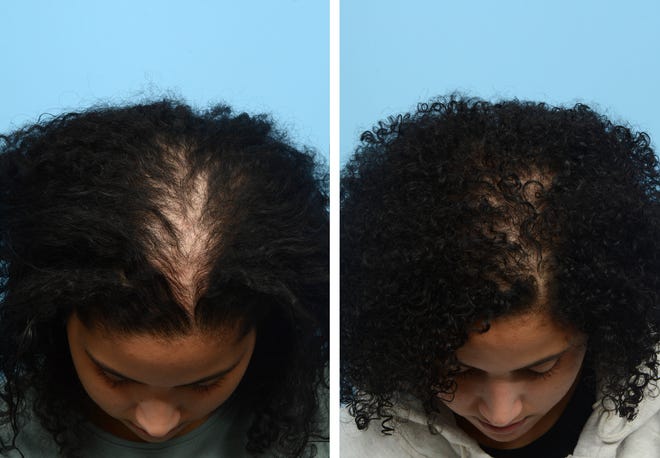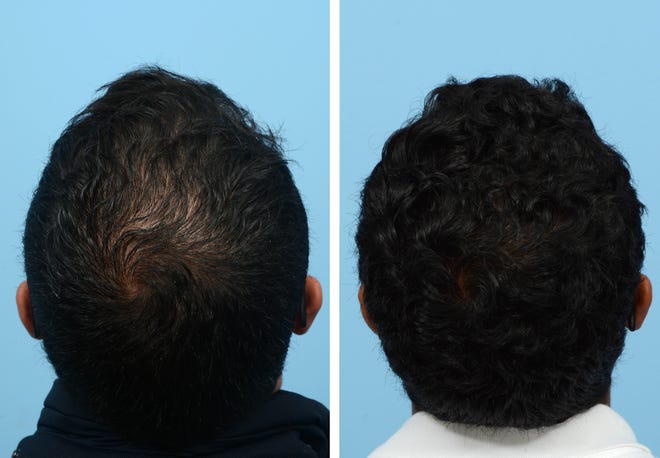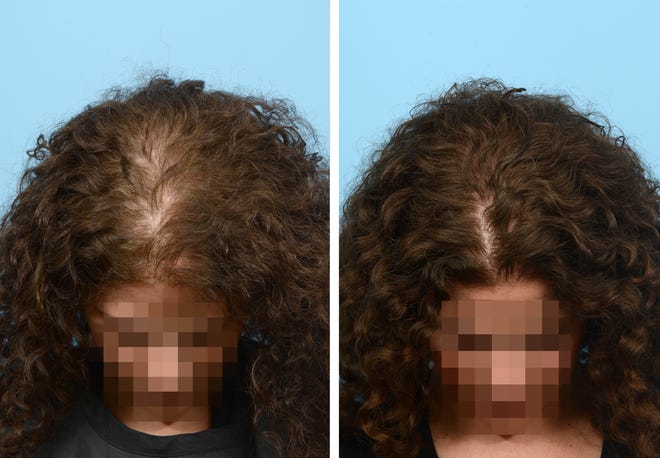Top Two Hair Growth Secrets

Postpartum hair loss is very common – so much so that approximately 90% of women will experience some form of it. Dr. Wise was able to reverse the hair loss for this patient with a series of three Platelet Rich Plasma Therapy sessions. Six months post-treatment, the patient is very happy and her results really speak for themselves.
Hormone-related baldness is responsible for about 95% of hair loss in men. This type of hair loss also occurs at all ages. In fact, by 35, two-thirds of men experience appreciable hair loss, according to the American Hair Loss Association.
The good news? Medical and technological advances can help you get ahead of this problem. In fact, there are two powerful treatments, in particular, that are proving extremely effective in rejuvenating dying hair follicles, says Dr. Jeffrey Wise, the founder of the Wise Institute for Hair Restoration in Wayne, NJ. Wise is an NYU School of Medicine professor and has performed more than 7,000 hair restoration procedures.
“Many people want to take early restorative or preventative action before they go completely bald. We’ve helped them rejuvenate their hair and their confidence with these two safe and effective therapies,” Dr. Wise says.
PRP therapy

Dr. Wise was able to stimulate natural hair growth and increase the overall density of this 22-year-old patient with 3 sessions of Platelet Rich Plasma (PRP) therapy. Six months after his third treatment, the results are amazing, and he is very pleased with the renewed thickness of his hair.
Platelet Rich Plasma (PRP) therapy is an increasingly popular outpatient procedure that can be used as a stand-alone preventative or in conjunction with another hair restoration procedure.
The procedure involves taking a small blood sample from the patient, which is then placed in a centrifuge device that spins the blood at high speed to separate the blood’s components – red, white, platelet and plasma cells. Plasma naturally rises to the top; meanwhile, the device separates out platelets, a powerful blood component that naturally releases growth factors to promote blood clotting and wound healing.
“Those platelets are then combined and injected into the scalp. It almost acts as a fertilizer for the head,” Dr. Wise says.
Not all PRP therapies are the same. Dr. Wise uses the Arteriocyte Magellan TruPRP system, which utilizes ACell®, a high-platelet hospital-grade PRP solution of the highest purity. Wise Institute for Hair Restoration is the only office-based center in Essex, Somerset, Passaic and all of New Jersey to use the Magellan system.
“The solution promotes cells to come out of what we call the resting phase and go into the growth phase,” he notes. “Our solution typically has about five times the number of platelets as normal cells.”
For PRP, Dr. Wise’s patients typically have three treatments approximately one month apart and maintenance therapy every 6-12 months.
Exosome Therapy

Stress-related hair loss brought this 48-year-old patient to the Wise Institute for Hair Restoration. Following Dr. Wise’s recommendations, she had two sessions of combined Platelet Rich Plasma and Exosome therapies, spaced 1 year apart. Six months after her second treatment, she is amazed by how thick and luscious her hair looks, and how healthy her scalp has become post-treatment.
Exosome Therapy is another treatment that’s growing in popularity. Exosomes are not cells, but extracellular vesicles whose primary role is to nurture communication and transmit genetic information between cells. These critical molecules use specific proteins, messenger RNA, and microRNA to do their work and contain growth factors that can signal healing and regeneration to other cells to restore hair.
Exosomes don’t replicate like stem cells and are about 1/1,000th the size of a normal cell. To perform the procedure, Dr. Wise uses technology that extracts exosomes from embryonic stem cells obtained from a placenta. Like PRP, exosomes are injected into the area where hair is thinning to stimulate regrowth. It’s not uncommon to see both PRP and exosome therapies used together.
“We’ve seen tremendous results for patients who have used exosome therapy alone or as an adjunct to PRP,” he says. “With age, cells needed for hair regeneration tend to want to quit. Exosomes boost that signaling and contain many types of proteins to rejuvenate them. We have found both treatments offer a very natural look, too.”

